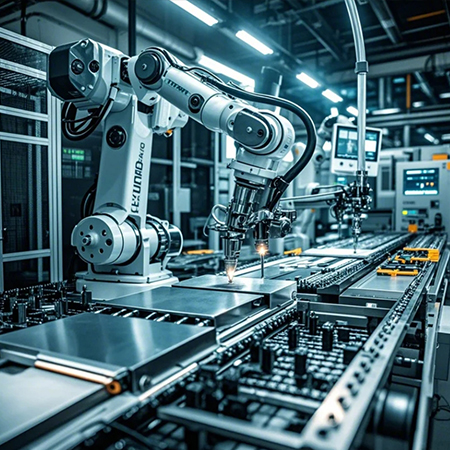October 14, 2024 – Mountain View, CA – In a significant advancement for the manufacturing sector, a newly developed robotic work cell has successfully integrated advanced clinching technology to streamline the production of sheet metal parts. This innovative system promises to enhance efficiency, reduce labor costs, and improve the overall quality of metal fabrication.
The robotic work cell, designed by a leading robotics firm in collaboration with industry experts, utilizes state-of-the-art automation to perform clinching—a process that permanently joins two or more sheets of metal without the need for welds or adhesives. This method not only strengthens the joints but also minimizes the risk of warping or distortion often associated with traditional welding techniques.
“With the rise of automation in manufacturing, our robotic work cell represents a pivotal step towards a more efficient and reliable production process,” said Jane Doe, Chief Technology Officer at Robotics Innovations Inc. “By integrating robotic systems into sheet metal fabrication, we can ensure consistent quality and faster turnaround times.”
The new system can process a variety of sheet metal materials, making it versatile for different applications, including automotive, aerospace, and general manufacturing. Its adaptability allows manufacturers to switch between tasks with minimal downtime, optimizing production schedules.
Key Features and Benefits
· Enhanced Efficiency: The robotic work cell can operate continuously, significantly increasing throughput compared to manual methods.
· Cost Reduction: By minimizing labor requirements and material waste, manufacturers can achieve substantial cost savings.
· Quality Assurance: The precision of robotic automation reduces human error, leading to higher quality products and fewer defects.
· Flexibility: The system can be programmed for various projects, accommodating the changing demands of the manufacturing landscape.
The unveiling of this robotic work cell comes at a time when the manufacturing industry is seeking innovative solutions to remain competitive. As businesses increasingly look to adopt automation technologies, the introduction of such advanced systems marks a promising trend toward smarter manufacturing processes.
Industry Impact
Experts believe that the integration of robotic work cells will set a new standard for efficiency in sheet metal production. “This technology not only enhances production capabilities but also positions manufacturers to meet the challenges of an evolving market,” said John Smith, a manufacturing analyst.
The robotic work cell is set to be showcased at the upcoming International Manufacturing Technology Show, where industry leaders will have the opportunity to see the technology in action and discuss its potential applications.
As the manufacturing sector continues to embrace automation, innovations like the robotic work cell highlight the industry’s commitment to improving productivity and quality in an increasingly competitive landscape.
Post time: Oct-14-2024





